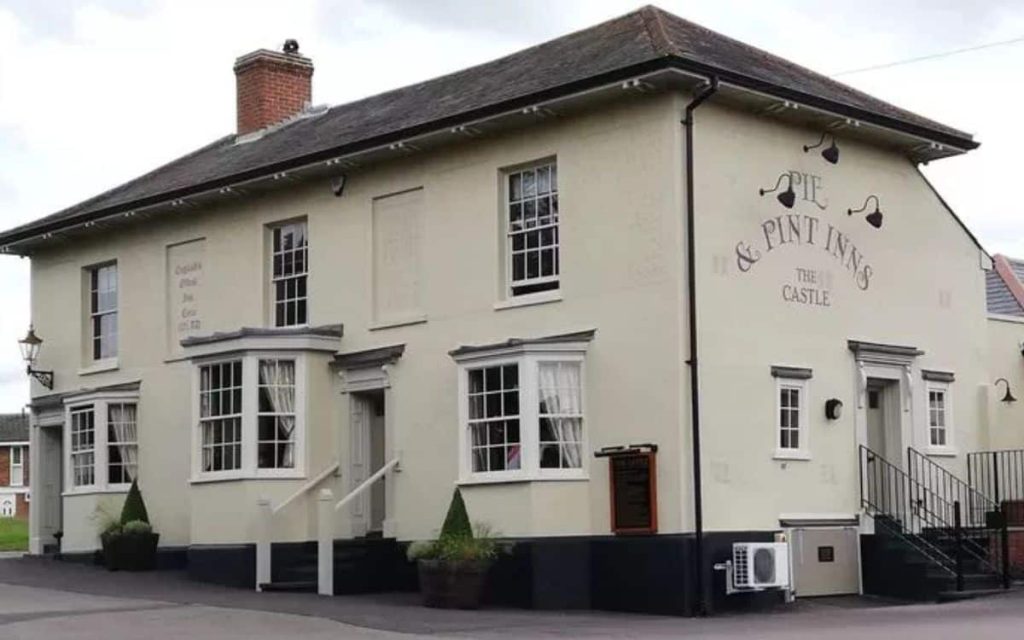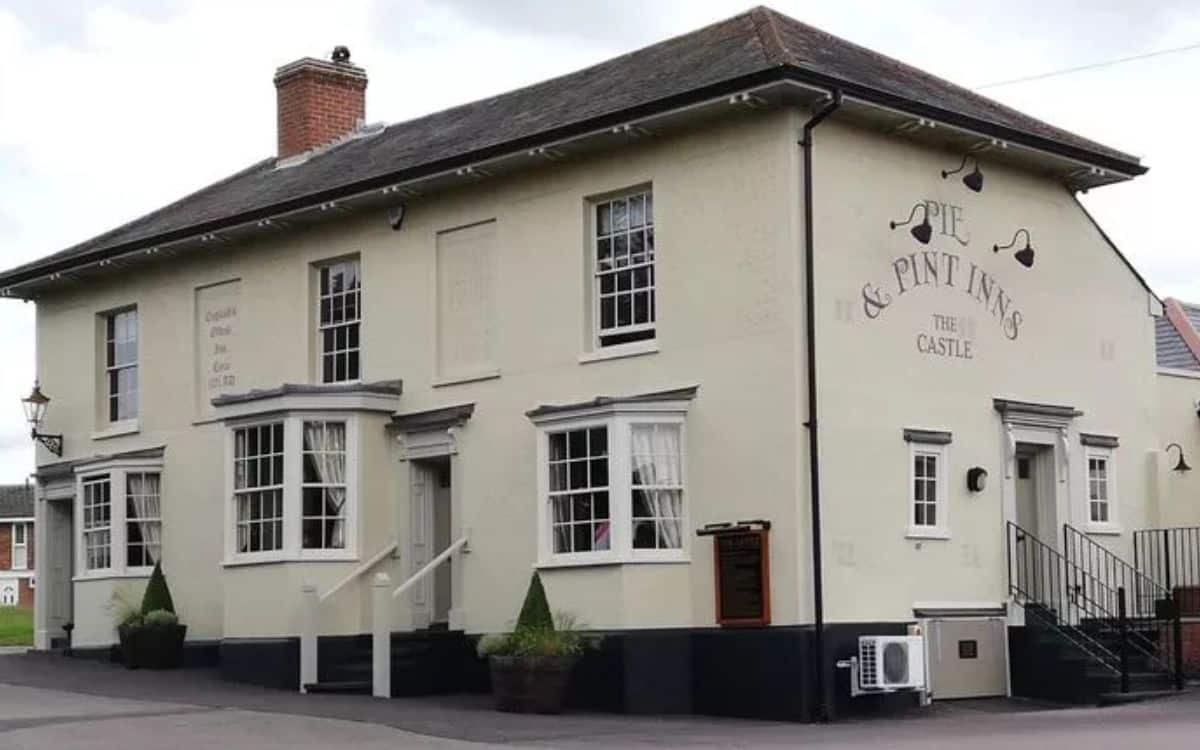The Witch of Scrapfaggot Green, a wartime legend from Great Leighs in Essex, tells of ghostly events sparked by the moving of an old witch’s burial stone, writes RICHARD CLEMENTS
The unassuming Essex village of Great Leighs unexpectedly drew attention during the Second World War.
Strange reports of paranormal activity began to emerge, all tied to an ancient, weathered stone and a much older local legend.
But as with so many enduring folk tales, the true story here is a complex weave of contradictions, blurred recollections, and persistent mystery.
A Curious Haunting in Wartime Essex
By 1944, with the Allied war effort ramping up, American forces based at nearby Boreham Airfield in Great Leighs began making key infrastructure upgrades.
Their aim was to handle the increasing military traffic. Part of this included widening a road that cut through a secluded, rural spot locals knew as Scrapfaggot Green.
During these operations, bulldozers accidentally struck a huge, old stone.
For centuries, this stone had sat at a crossroads, and local folklore consistently claimed it marked the burial of a 17th-century witch.
That stone’s upheaval quickly seemed to trigger a run of unsettling incidents throughout the area.
Reports came in fast: church bells supposedly chimed at midnight with no one nearby, farm animals were found inexplicably far from their pens, eerie noises broke the night’s calm, and household items appeared to shift on their own.
These puzzling events rapidly caught attention, both locally and even from abroad, cementing their place in the unfolding legend of the “Witch of Scrapfaggot Green”.
At the centre of Great Leighs stands The Castle Inn (once called St Anne’s Castle), a pub with centuries of history and a well-earned reputation for unexplained activity.
Although rebuilt after a fire, its original medieval cellars survive.
Accounts of ghostly disturbances within—unexplained footsteps, sudden cold draughts, even furniture moving by itself—had been part of the inn’s lore for generations before the war.
However, once the 1944 roadworks began, this activity reportedly escalated.
Patrons of the inn spoke of experiencing genuine poltergeist-like events, and a clear uneasiness seemed to settle over the village.
Who Was the Witch of Scrapfaggot Green?
The most commonly cited name in the legend is Anne Hughes (also found as Anne Hewes or Hues).
This widow faced serious witchcraft accusations at the Essex Assizes in 1621. Court records indicate her charges included numerous acts of maleficium—harm caused by witchcraft—ranging from allegedly causing deaths through sorcery to harming livestock.
Notably, contrary to the local legend, she was acquitted.
Parish records confirm that an Anne Hues was buried in December 1669 in consecrated ground—not burned or buried at a crossroads.
Then there’s Elizabeth Brooke, also from Great Leighs.

Elizabeth was convicted of witchcraft in 1584. She stood accused of bewitching, and causing the deaths of, animals and a local woman, Margaret Cleveland.
Her conviction under the 1563 Witchcraft Act resulted in execution by hanging—the customary legal penalty for such crimes in England at the time.
Over the centuries, it seems the details from these two separate cases slowly merged in collective memory, with local folklore adding its natural dramatic touches.
This forged a more compelling, though less accurate, story.
Where Was the Witch Buried?
Even with the tale’s strong presence in local tradition, finding the crossroads’ exact location continues to be debated.
The spot often called the burial site today isn’t even a proper four-way crossroads—it’s a staggered junction.
This is an interesting point, especially since traditional folklore consistently demands proper crossroads for such interments.
Further complicating matters, some researchers suggest the legend might have mixed with stories tied to a different stone marker in nearby Dukes Wood.
This area had been cleared for Boreham Airfield’s construction, and it’s plausible that existing legends around that marker—reputedly commemorating a murdered gamekeeper—became confused with the witch narrative.
Harry Price and the Midnight Ceremony
With strange events escalating, Harry Price, the famous paranormal investigator known for his Borley Rectory case, naturally became intrigued.
In his 1945 book Poltergeist Over England, Price describes how villagers approached him, certain the recently moved stone was behind their problems.
Price, ever pragmatic, advised that if the community believed the unrest was tied to the stone, it should be restored to its original place and orientation.
A ceremonial reburial reportedly took place at midnight on 11–12 October 1944, with the stone aligned east to west.
According to Price, the disturbances ceased thereafter.
However, contrary to many retellings, Price made no claim that the witch’s remains were reinterred in the churchyard, nor did he present the affair as clear evidence of a haunting.
One of the most curious episodes from this night came the following morning.
Laid across the stone in bundles of sticks — traditional “faggots” from a nearby oak — was a message spelled out in Latin: Non in sum.
It was translated by a Latin-speaking American soldier as “Nobody home”.
Price did not attempt to explain this event further, leaving it as one of several strange occurrences that lent the story its folkloric richness.
The ambiguity surrounding Scrapfaggot Green and the details of its legend continue to intrigue modern researchers.
In 2015, local investigators Mark and Laura, who operate under the name Paranormal Reason, undertook their own quest to pinpoint the elusive site, noting its surprising absence from contemporary or historical maps.
Their search, detailed on their blog, led them to conclude that what remains of the Green today is likely a very small, triangular patch of grass at the eastern end of Drakes Lane.
This location offers an alternative to the often-cited staggered junction, underscoring the ongoing debate and differing interpretations of the precise historical site.
Mark and Laura also visited the current Witch Stone at The Castle Inn, noting it as “smaller than I’d imagined and was laid flat, sunk into the neatly mown grass verge”.
Curiously, Mark reported that his mobile phone camera inexplicably failed to open its shutter when he first attempted to photograph the stone, only working on the third attempt.
A minor but intriguing incident, it adds to the lore surrounding the object.
Their investigation also uncovered intriguing connections to the broader atmosphere of the locale.
While approaching The Castle Inn, Laura reported sensing “sanctuary”, a feeling Mark later connected to the building’s historical role as a Norman priory and a monastic hospice for pilgrims.
This adds a deeper layer to the inn’s long-standing ghostly reputation, suggesting a spiritual resonance that predates the 1944 events.
Furthermore, on a return visit to the identified Scrapfaggot Green, Laura reported a vivid, unsettling sensation of “firm pressure around her neck”, followed by nausea.
This experience echoes the darker aspects of the legend and suggests the site retains an unusual atmosphere for some, even today.
Hoax, Hysteria, or Folklore in Motion?
A striking aspect of this story is the surprising scarcity of contemporary documentation.
Beyond a single article in the Sunday Pictorial from October 1944 and a brief mention in Time Magazine, local newspapers largely ignored the dramatic occurrences.
Such minimal reporting prompts some historians to suggest the tale simply expanded with each retelling—or perhaps even began as a mischievous hoax aimed at gullible journalists.
This undeniable absence of solid primary sources naturally fosters considerable scepticism among folklorists.
Other perspectives, however, argue that regardless of embellishment or faulty recollections, the narrative provides an authentic glimpse into the anxieties and cultural memory of wartime Britain.
The immense chaos and profound uncertainty of 1944 Britain created fertile conditions for ancient fears—especially those tied to witchcraft, the supernatural, and the respectful treatment of the dead—to return.
Burials at crossroads have long held symbolic meaning in British culture.
Traditionally, such locations were chosen for those denied Christian burial—suicides, executed criminals, and accused witches.
The belief was that the confusion of crossing paths would prevent the restless dead from returning.
Placing a heavy stone over the grave had both practical and symbolic value: it kept scavengers out and spirits in.
To move such a stone, particularly without respect or ceremony, was to risk opening the boundary between the living and the dead.
Legacy and the Stone Today
As for the original stone’s fate, theories vary.
Some suggest it broke apart amidst the tumultuous wartime ceremonies, while others believe it was simply removed and discreetly disposed of.
Today, a smaller stone occupies The Castle Inn’s car park.
Some view it as the true marker; others see it as merely a symbolic prop.
Despite its many unanswered questions and ambiguities, the legend of the Witch of Scrapfaggot Green thrives.
It appears in books, podcasts, and countless local tales.
Whether it represents a truly authentic haunting or simply a compelling illustration of evolving collective folklore, the tale powerfully highlights Britain’s complex history with its witch-hunting era—and our lasting fascination with the uncanny.
Have you ever visited Great Leighs or heard tales of the Witch of Scrapfaggot Green? Share your thoughts or stories in the comments!



